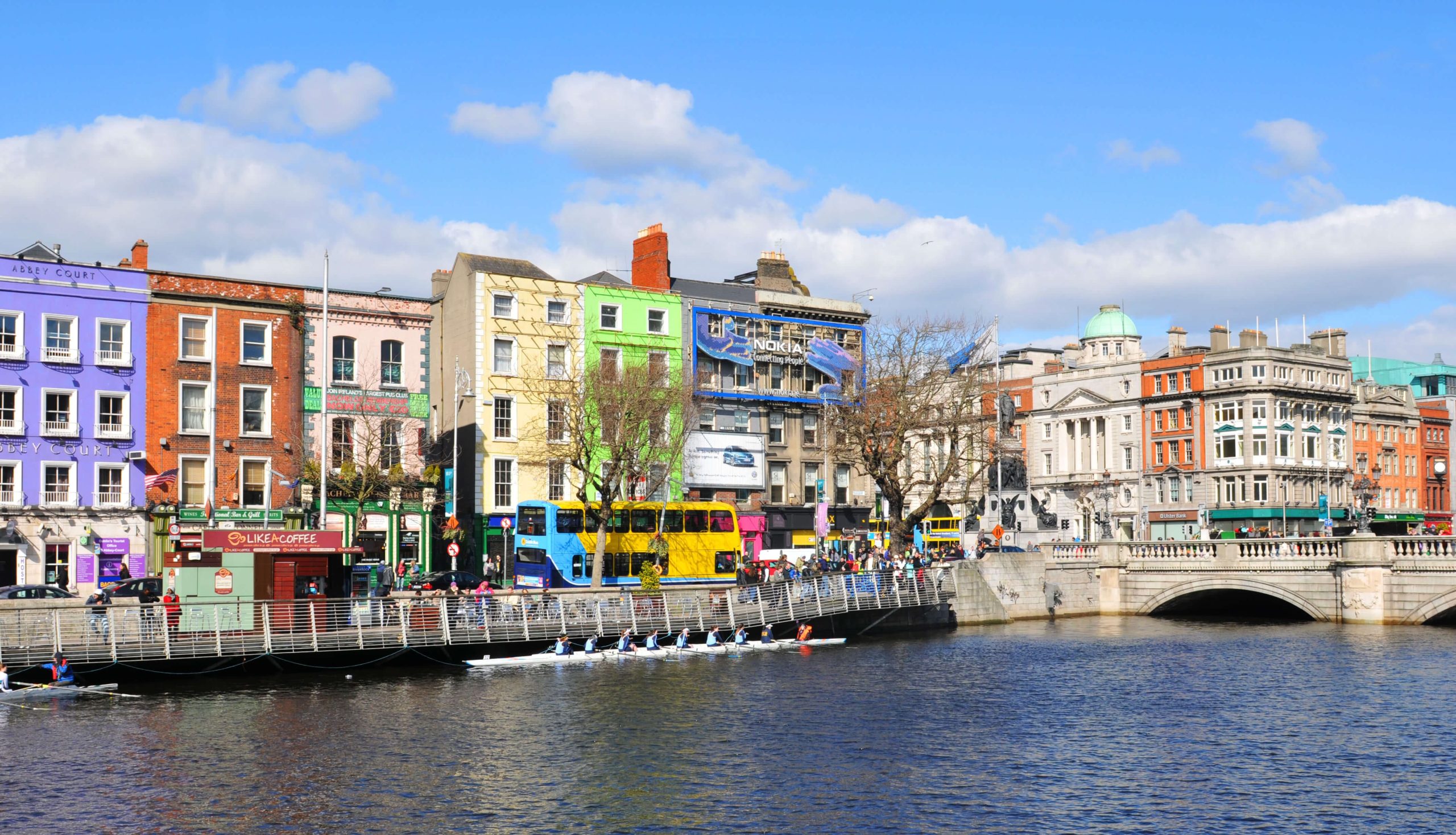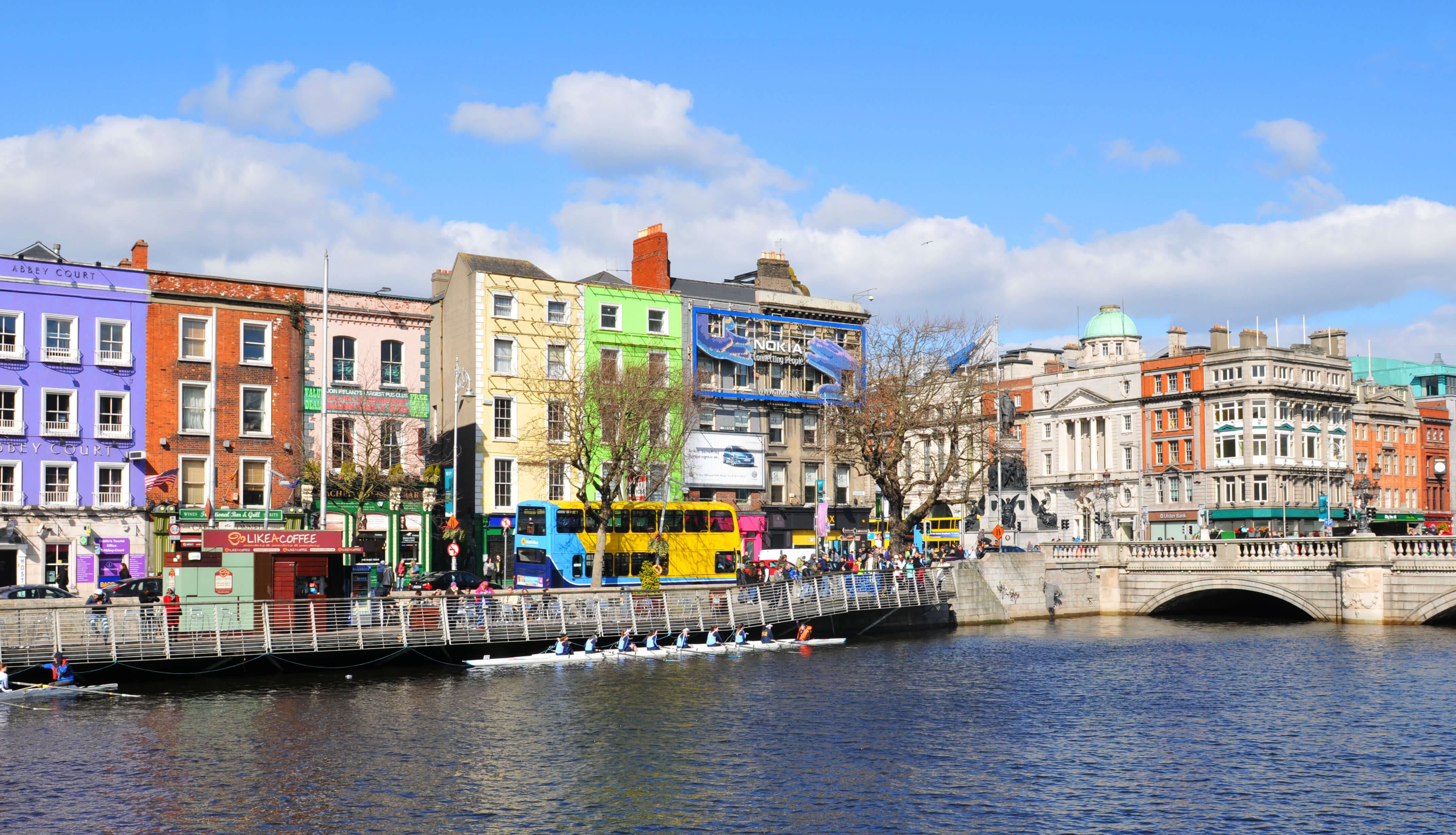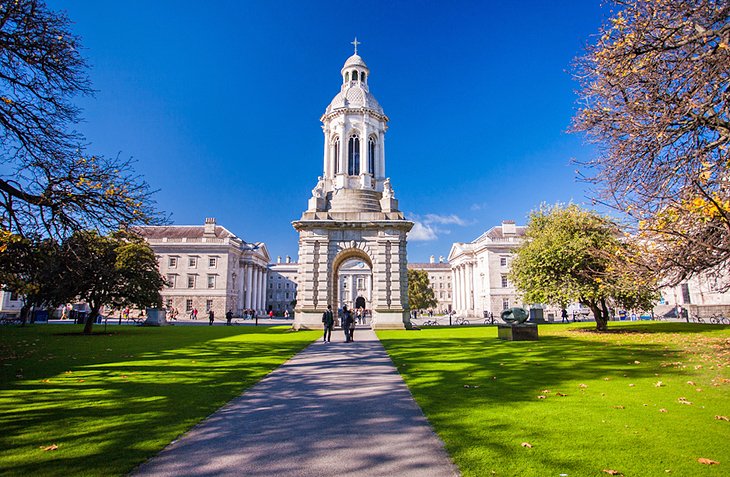
Dublin, the vibrant capital of Ireland, is a city that whispers tales of ancient lore, resonates with the echoes of literary giants, and pulsates with a modern, youthful energy. From its cobbled streets and Georgian squares to its lively pubs and world-class museums, Dublin offers an intoxicating blend of history, culture, and craic (good fun). This comprehensive guide will take you on a journey through its top attractions, delve into its rich history, provide essential travel tips, explore accommodation options, navigate transportation, and pinpoint the best times to experience its unique charm.
A Glimpse into Dublin’s Storied Past:
Dublin’s history is a tapestry woven with Viking settlements, Norman invasions, centuries of English rule, and a relentless fight for independence. Founded as a Viking settlement in the 9th century, it grew into a significant medieval city. The Anglo-Normans arrived in the 12th century, leaving their mark on its architecture and administration. For centuries, Dublin was the seat of English power in Ireland, a period that shaped its social and political landscape. The 19th century saw the rise of Irish nationalism, culminating in the Easter Rising of 1916 and the subsequent War of Independence, leading to the establishment of the Irish Free State in 1922. This tumultuous past is palpable as you wander through its streets, with ancient castles standing alongside Georgian elegance and reminders of revolutions past.

Related Articles about Dublin’s Enduring Charm: A Journey Through Its Top Attractions and Timeless Appeal:
- Milan: A Renaissance of Style, Culture, and Culinary Delights
- Paris, The City of Light: A Comprehensive Guide to its Timeless Allure
- Jordan: A Journey Through Ancient Wonders and Desert Dreams
- Phuket: The Pearl of the Andaman – A Comprehensive Guide to its Best Hotels, Attractions, and Travel Essentials
- Yogyakarta: A Comprehensive Guide to the Soul of Java
Dublin’s Crown Jewels: Top Attractions Not to Be Missed:
Dublin boasts a wealth of attractions catering to every interest. Here are some of the absolute must-sees:
-
Trinity College Dublin & The Book of Kells: Step into the hallowed halls of Ireland’s oldest university, founded in 1592 by Queen Elizabeth I. The Long Room library is a breathtaking spectacle, a cathedral of books housing over 200,000 ancient volumes. The star attraction, however, is the Book of Kells, a richly illuminated manuscript created by Celtic monks around 800 AD. Its intricate artwork and calligraphic mastery are simply mesmerizing. Allow ample time to soak in the atmosphere and admire the sheer volume of knowledge contained within this iconic library.
-
Dublin Castle: Once the seat of British power in Ireland, Dublin Castle is a fascinating complex that offers a window into centuries of history. Explore the State Apartments, the medieval Undercroft, and the Chapel Royal. The castle grounds themselves are beautiful, and the guided tours provide insightful narratives about its evolution from a Viking fortress to a symbol of imperial rule and finally, an Irish administrative center.
-
St. Patrick’s Cathedral: Dominating the Dublin skyline, St. Patrick’s Cathedral is Ireland’s national cathedral and a magnificent example of Gothic architecture. Founded in 1191, it has witnessed countless historical events and is the final resting place of many prominent figures, including Jonathan Swift, author of "Gulliver’s Travels." The soaring arches, stained-glass windows, and impressive organ create an atmosphere of awe and reverence.
-
Christ Church Cathedral: A stone’s throw from St. Patrick’s, Christ Church Cathedral, founded in 1030, is Dublin’s older cathedral. It boasts a beautiful medieval interior, including a stunning crypt, one of the largest in Britain and Ireland. The blend of Norman and Gothic styles makes it a truly unique architectural gem. Don’t miss the chance to explore its ancient foundations and imagine the lives of those who worshipped here centuries ago.
-
The Guinness Storehouse: No visit to Dublin is complete without a pilgrimage to the Guinness Storehouse. Located at the heart of the original Guinness Brewery, this seven-story attraction tells the story of Ireland’s most famous stout, from its humble beginnings to its global icon status. Enjoy interactive exhibits, learn about the brewing process, and, of course, savor a perfectly poured pint of Guinness in the Gravity Bar, offering panoramic 360-degree views of Dublin.
-
Kilmainham Gaol: This former prison is a poignant and powerful testament to Ireland’s struggle for independence. It played a central role in Irish history, holding many leaders of rebellions. The guided tours are incredibly moving, bringing to life the stories of the men and women who were imprisoned and executed within its walls. It’s an essential stop for understanding the nation’s fight for freedom.
-
Temple Bar: While often described as a tourist trap, Temple Bar is undeniably a vibrant and lively district. Its cobbled streets are lined with traditional pubs, many featuring live traditional Irish music. While it can be crowded and pricier, it’s worth experiencing for the atmosphere, the music, and the sheer energy. Venture beyond the main thoroughfare to discover smaller, more authentic pubs.
-
National Museum of Ireland – Archaeology: For history buffs and those fascinated by Ireland’s ancient past, this museum is a treasure trove. It houses an incredible collection of prehistoric gold artifacts, Viking treasures, and medieval weaponry. The "Treasures of Ireland" exhibition is particularly noteworthy, showcasing stunning gold work from the Bronze Age and Iron Age.
-
Grafton Street: Dublin’s premier shopping street is a bustling hub of activity. Lined with a mix of high-end boutiques, department stores, and high-street brands, it’s a great place for retail therapy. The street is also renowned for its talented buskers, who add a lively soundtrack to your shopping experience.
-
Phoenix Park: One of the largest enclosed urban parks in Europe, Phoenix Park offers a welcome escape from the city’s hustle and bustle. Home to herds of wild fallow deer, Dublin Zoo, Áras an Uachtaráin (the official residence of the President of Ireland), and the Wellington Monument, it’s a vast green lung perfect for walking, cycling, or picnicking.

Navigating Dublin: Transportation Tips:
Getting around Dublin is generally straightforward, with several efficient transportation options:
- Walking: Dublin is a highly walkable city, especially in the city center. Many attractions are within easy walking distance of each other, allowing you to soak in the atmosphere and discover hidden gems.
- Dublin Bus: The most extensive public transport network, Dublin Bus operates a comprehensive service connecting various parts of the city and its suburbs. Purchase a Leap Visitor Card for convenient tap-on, tap-off travel.
- Luas: Dublin’s tram system, the Luas, has two main lines (Red and Green) that are excellent for reaching attractions outside the immediate city center, such as Kilmainham Gaol.
- DART (Dublin Area Rapid Transit): This commuter rail line runs along the coast, offering scenic journeys to charming seaside towns like Howth and Dun Laoghaire, which are perfect for day trips.
- Taxis and Ride-Sharing: Taxis are readily available throughout the city, and ride-sharing apps are also operational.
- Cycling: Dublin is becoming increasingly bike-friendly, with numerous bike rental schemes available.
Where to Lay Your Head: Accommodation Options:
Dublin offers a diverse range of accommodation to suit every budget and preference:
- Luxury Hotels: For a lavish experience, consider hotels in areas like Merrion Square or near St. Stephen’s Green, offering elegant rooms and exceptional service.
- Boutique Hotels: Dublin has a growing number of stylish boutique hotels, often housed in historic buildings, offering unique character and personalized service.
- Mid-Range Hotels: You’ll find a plethora of comfortable and well-located mid-range hotels throughout the city, providing good value for money.
- Hostels: Dublin has a vibrant hostel scene, offering budget-friendly dorms and private rooms, perfect for solo travelers and those on a tight budget. Many hostels also organize social events and tours.
- Apartment Rentals: For longer stays or families, consider renting an apartment through platforms like Airbnb, offering more space and self-catering facilities.
When to Visit Dublin: The Best Times to Experience the Magic:
Dublin’s charm can be enjoyed year-round, but each season offers a slightly different experience:
- Spring (March – May): This is a delightful time to visit, with milder weather, fewer crowds than summer, and the city bursting into bloom. Expect temperatures to range from 8°C to 15°C (46°F to 59°F).
- Summer (June – August): Dublin’s busiest season, with the longest daylight hours and the most vibrant atmosphere. Expect warmer temperatures, averaging around 15°C to 20°C (59°F to 68°F), but also higher prices and larger crowds. This is ideal for enjoying outdoor festivals and events.
- Autumn (September – November): Another excellent time to visit, with pleasant temperatures, fewer tourists, and beautiful autumn foliage. The weather can be a bit more unpredictable, but the city retains its charm. Expect temperatures to range from 9°C to 16°C (48°F to 61°F).
- Winter (December – February): While colder, winter in Dublin has its own unique appeal. The city is beautifully decorated for Christmas, and you can enjoy cozy pub nights by the fire. Expect temperatures to hover around 3°C to 8°C (37°F to 46°F). It’s also the cheapest time to visit.
Essential Dublin Travel Tips:
To make your Dublin adventure even more enjoyable, keep these tips in mind:
- Book Accommodation in Advance: Especially if you’re visiting during peak season, booking your accommodation well in advance is highly recommended.
- Embrace the Weather: Irish weather is famously changeable. Pack layers, including a waterproof jacket and umbrella, regardless of the season.
- Currency: The currency in the Republic of Ireland is the Euro (€).
- Tipping: Tipping is not mandatory in Ireland but is appreciated for good service. A tip of 10-15% is customary in restaurants and for taxi drivers.
- Power Adapters: Ireland uses Type G power sockets (the same as the UK).
- Learn a Few Irish Phrases: While English is spoken everywhere, learning a few basic Irish phrases like "Dia duit" (hello) and "Go raibh maith agat" (thank you) will be appreciated.
- Enjoy the Pub Culture: Pubs are the heart of Irish social life. Don’t be afraid to strike up a conversation with locals – they’re known for their friendliness and storytelling.
- Consider a Dublin Pass: If you plan to visit many paid attractions, a Dublin Pass can offer significant savings.
- Stay Hydrated and Pace Yourself: While the Guinness flows freely, remember to stay hydrated with water and pace yourself to fully enjoy all that Dublin has to offer.
Conclusion:
Dublin is a city that captivates the soul. Its rich history, from ancient monastic settlements to revolutionary fervor, is etched into its very fabric. Its top attractions offer a diverse and enriching experience, from the intellectual grandeur of Trinity College to the poignant history of Kilmainham Gaol. With its welcoming atmosphere, efficient transportation, and a wide array of accommodation, Dublin is an accessible and unforgettable destination. Whether you’re a history enthusiast, a literature lover, a keen shopper, or simply seeking a vibrant cultural experience, Dublin promises a journey filled with charm, character, and an enduring spirit that will leave you yearning to return. So, pack your bags, open your mind, and prepare to fall under the spell of this magnificent Irish capital.





